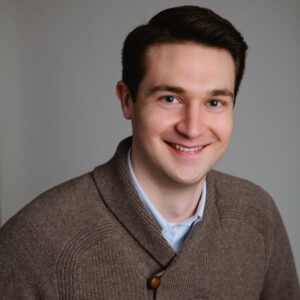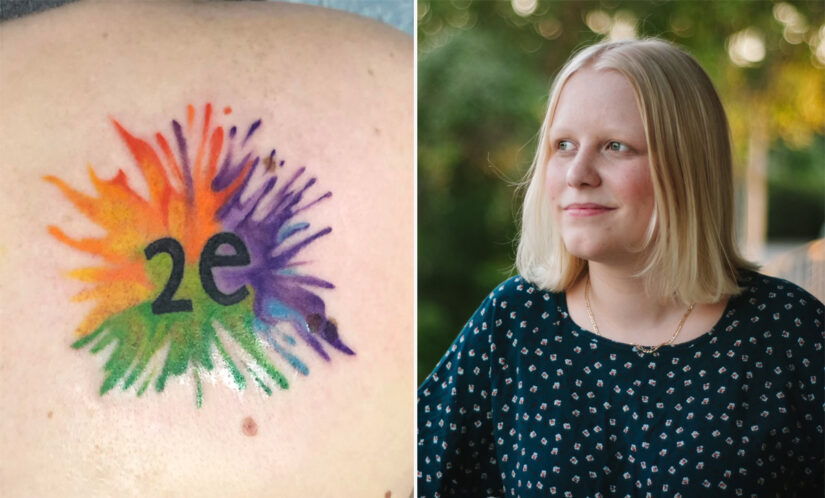Students with Disabilities Often Overlooked in Gifted Programming
These “twice exceptional” children face unique challenges: Their disability can mask their smarts, leaving their talents undiscovered at school

Get stories like this delivered straight to your inbox. Sign up for The 74 Newsletter
Gifted programming, already uneven across the country and prone to racial discrimination, has yet another blind spot: twice exceptional students.
These advanced learners, who may also receive special education services, can languish academically, their skills overlooked. The same holds true for low-income children, students of color and those learning to speak English.
Experts say most teachers have only limited training in gifted education and tend to focus on students’ limitations rather than their strengths, leaving twice exceptional learners particularly vulnerable.
In some cases, these students’ disabilities can mask their aptitude. In others, their accelerated nature can hide their challenges.
In both instances, they often go without the support they need and may come to feel unintelligent as their confidence wanes.
Nearly 7 million children ages 3 through 21 were served under the Individuals with Disabilities Education Act in 2017-18, according to the National Center for Education Statistics. They represented 14% of the nation’s overall student population but only 2.8 percent of the 3.3 million children enrolled in gifted programming that year, the last for which such data was compiled by the U.S. Department of Education. That figure jumped to 7.2 million, or 15 percent, in 2020-21.
Experts say schools’ failure to help these students reach their potential amounts to a loss not only for the child themselves, but for the community and nation.
“If they are not identified and supported properly, gifted students are often in classes below their abilities,” said Megan Cannella, family services manager at the Davidson Institute, a Nevada-based nonprofit dedicated to profoundly gifted students age 18 and under. “The work can seem redundant, boring and slow. In these situations, students are typically not learning new information or growing their skills. Over time, this becomes discouraging, and they may underachieve … by rushing through work, doing the bare minimum or refusing to do work.”
Roughly 8% of the 846 students identified as gifted in the McAllen Independent School District in South Texas are twice exceptional. They have either a 504 plan, which provides for support services and accommodations, or are enrolled in special education classes, a district official said.
Broward County Public Schools in Florida reported a slightly higher rate at 8.4%. Of the 1,364 students in Denver Public Schools’ gifted or highly gifted program in grades K-5, 131 have special needs, bringing the percentage to 9.6.
Children with either 504s or Individualized Education Plans, special schemes to help disabled students succeed in school, made up 10% of the 6,666 students in Florida’s Hillsborough County Public Schools gifted elementary school program, officials said. Orange County Public Schools in that same state came in at 9%.
Baltimore City Public Schools has made a concerted effort to include under-represented children in this group: It came in at the highest level with 358 of its 3,114 elementary-aged gifted and advanced students having a learning disability — nearly 11.5%.
Gifted and talented offerings across the country have been under fresh scrutiny since former New York City Mayor Bill de Blasio moved, in October 2021, to end the program at the elementary school level because it perpetuated decades of discrimination against Black and Hispanic children. Eric Adams, who struggled in school himself with dyslexia and replaced de Blasio in January, decided to preserve and expand the program, despite its well-documented deficiencies.
Deborah Alexander, of Astoria, Queens, recalls the frustration she and her son, Augustus, endured when he was in the first grade.
“He wasn’t learning to write letters properly,” she said. “His hand strength was not there. We had him evaluated by the school and they told us, erroneously, his grades were too good to qualify for services.”
Alexander, who has served on the Community Education Council for District 30 for a decade, is also a member of New York City’s Parent Leaders for Accelerated Curriculum or PLACE, which is currently investigating how twice exceptional children are being treated.
She asked, back when her son was young, if he could type on a computer rather than write by hand, but the request was denied.

Augustus’s grades started to slip, but that all changed when he was allowed to type on a tablet in middle school.
Augustus, diagnosed with “disorder of written expression,” a learning disability, and obsessive compulsive disorder, said the accommodation transformed his educational experience: The 15-year-old rising sophomore at the prestigious Bronx High School of Science said he no longer worries about his work being illegible. Finally, he could share all he knows, he said, adding that every child should be given the tools they need to succeed.
“It’s really important that everyone can learn, not just for the larger benefit of society, but because it develops you,” he said. “Even just last year, if I had to write by hand, I don’t think I would be as prepared for next year or for college.”

Brandon Wright, editorial director at the Thomas B. Fordham Institute, a conservative education policy think tank, understands this population.
“I had a bad stammer and was also gifted,” he said. “My school offered me a speech therapist, giving me the tools I needed to thrive in the classroom.”
But he knows not all children have this opportunity, which is why he advocates universal screening in which all students’ test scores are examined for standouts.
But test results should be only one element, said Wright, who just launched a bi-monthly newsletter, Advance, to chart the progress of gifted education in America. Teachers should be better trained to spot these students and they should be admitted on a rolling basis with “constant on-ramps,” giving children multiple opportunities to join such programs as their skills develop.
Yet Nielsen Pereira, associate professor of Gifted, Creative and Talented Studies at Purdue University, who instructs educators, said many of his students, including those who have been in the classroom for years, “are surprised these types of students even exist.”
Many college and university programs don’t mandate proficiency on the topic: An educator’s exposure might amount to a single lecture buried inside another, unrelated course.
A lack of funding for these programs, which are not mandated at the federal level, helps explain why they are available in some locations and not others — and why their quality varies so widely, he said.
“We focus so much on making sure everyone is meeting the minimum standards that we forgot about how to bring kids … to their highest potential,” he said.
And there are other characteristics among twice exceptional children that can make them hard to spot. Not all have high marks: Disillusionment with school coupled with the challenges of their disabilities can cause them to give up, further camouflaging their talents.
Felicity Ross, who teaches mathematics to gifted children inside Baltimore City Public Schools, said it’s easy for teachers without proper training to correlate low test scores to low skills.
“It can take years to diagnose kids with disabilities — and years to identify them as being gifted,” she said. “This is particularly tough for new teachers.”
But, she said, there are tactics that can help: When it comes to evaluating those children who have trouble writing, for example, educators should consider other factors.
“We need to listen to them verbally,” she said. “What they can tell us and explain might be at a different level than what they can write down or show. For math kids, they can’t explain it … but produce a correct answer.”
The problem there, she said, is that current standards around mathematics require students to show their progress and explain the strategy.
“But that doesn’t align with their skills and abilities,” she said.

Megan Roddie, 25, graduated high school two years early, earned two master’s degrees and enjoys a thriving career in cybersecurity. Diagnosed with autism at age 12, she didn’t recognize her own abilities for several years and the teachers in her Houston-area schools didn’t know how to handle her.
“I talked a lot … and out of turn,” she said. “I was ahead of the curriculum I was given … and when I got bored, I acted out. They decided I wasn’t paying attention and that was an issue.”
But why pay attention when she already knew the answers, she reasoned.
And, she said, her teachers didn’t always recognize her needs: When she scored stellar marks in mathematics in middle school, they moved her to the back of the classroom so the struggling kids could sit up front.
“I felt like I was being punished, taken away from my favorite spot,” she said. “Especially as an autistic kid, you don’t mess with my routine.”
It takes time and communication for teachers to learn what their students need. And, experts say, teachers should remember children do not have to be advanced in all subjects to be considered gifted.
“Some kids would benefit from advanced math but may not benefit at the moment from an advanced English class — though that could change in the future,” the Fordham Institute’s Wright said. “We don’t want to have exclusionary gifted services, but a spectrum of increased intensity that meets as many kids as possible where they are.”
Homero Chávez, the Early College Program director at Gadsden Elementary School District No. 32 in San Luis, Arizona, at the nation’s southern border, relies heavily on student test results to identify those who are gifted in mathematics.
The highest scoring on standardized exams at each campus in the 5,000-student district are invited, starting in the fifth grade, to join a program that allows them to take for-credit college-level courses — and the ACT.
Disabilities are not considered in the admissions process although students are accommodated as needed, Chávez said.
“If they wish to be in a high-level class and they excel, why not?” he said. “They do have the right to be there.”
Get stories like these delivered straight to your inbox. Sign up for The 74 Newsletter

;)
